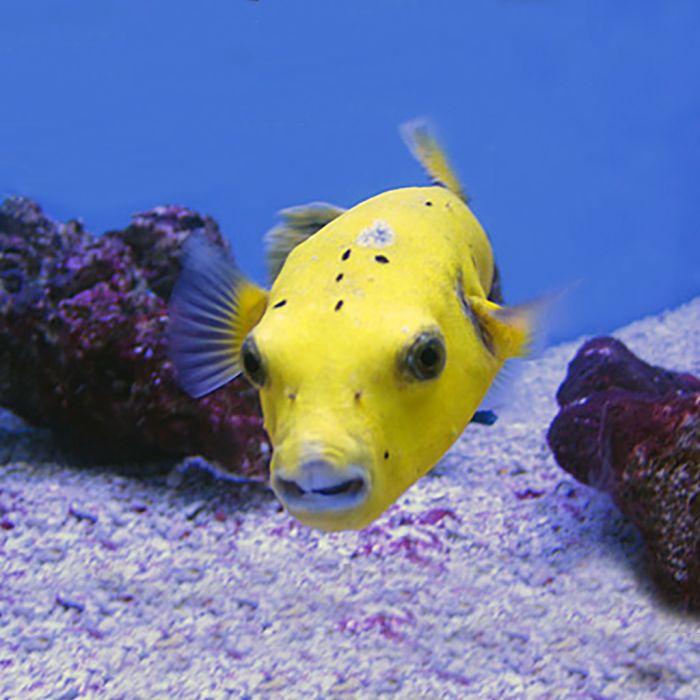Golden Puffer (South Pacific)
Pufferfish are some of the most interesting fish available. Their rounded bodies and cute faces are almost irresistible. Tank mates should be selected carefully, however, as pufferfish will use their strong beaks to investigate everything in the aquarium for edibility. They like to eat snails, crabs, bivalves and shrimp, and in fact these crunchy items are important for trimming their ever-growing beaks. They may also sample corals, feather dusters, and any other invertebrate available. They may chase and bully other fish, especially those smaller than themselves. They are typically aggressive with other pufferfish and two should only be kept together in the very largest of aquariums, and added at the same time.
There are two main types of pufferfish- the Tobies, or sharp-nosed puffers, which are small sized fish typically 4-5 inches, and normal pufferfish which typically grow at least 12 inches. All pufferfish have the ability when frightened to inflate their bodies to a huge size. This is an extreme threat response and should never be encouraged. We recommend pufferfish be transported in a container rather than a net, because should it inflate with air rather than water it could experience massive problems expelling the air.
Pufferfish have shiny eyes that often appear to shimmer a turquoise color but may also at times appear glossed over. Males and females are identical, however males may grow larger.
Puffers are carnivores and should be fed two to three times a day a high quality diet of meaty items such as Mysis shrimp, krill, silversides, clams, and chopped seafood. Algae clips with nori are a favorite treat and may be quickly devoured. They are heavy feeders and thus strong filtration is necessary.
The Golden pufferfish is rare and exquisite beauty. It is primarily a deep daffodil yellow sometimes with a silvery belly. Contrast is created by inky black spots scattered over its body, and sometimes black edging to its fins. It grows up to 19.5 inches and needs an aquarium of at least 180 gallons.

